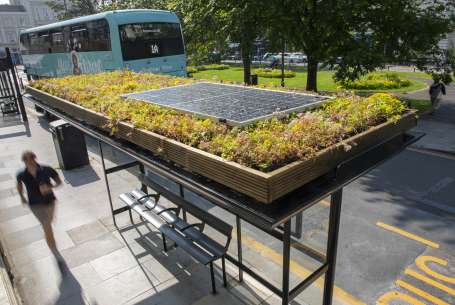Climate adaptation
Find out about our work to reduce the risks of flooding, storms, extreme heat and drought.
Adapting to climate change
Adapting to climate change is a key part of our Net Zero journey. As part of our response to an increase in extreme weather events, we are prioritising adaptation plans and projects.
Why climate adaptation is important
Brighton & Hove is increasingly seeing the impact of climate change, with more regular storms resulting in flooded streets and homes, power outages and damages to businesses.
Summers are getting warmer, with more extreme heat putting vulnerable people at risk and food and water shortages from drought.
Building resilience to climate change through climate adaptation will help to protect local people, businesses and the natural and built environment.
What climate adaptation is
Climate adaptation means adjusting to the current or expected effects of climate change, such as storms, floods and extreme heat.
Some examples of climate adaptation are:
- building flood defences
- setting up early warning systems for storms
- switching to drought-resistant crops
- designing buildings and public spaces for shade and flood protection
- changing business operations
Climate adaptation projects in the city
We’ve designed some of our local adaptation projects to cope with flooding during times of heavy rainfall and protect our seafront from rising seas and coastal erosion.
Learn more about how we're rotecting the coastline in Brighton & Hove, from creating a new beach, to replacing timber groynes.
We’ve developed Sustainable Urban Drainage Systems (SuDS) or rain gardens that redirect rainfall. Examples include Carden Avenue and Norton Road, where residents have experienced flooding.
Read more about:
- Sustainable Drainage Systems
- the Norton Road rain garden
- our project for a rainscape in Wild Park to prevent flooding and protect our underground drinking water
Climate risk study
We’ve produced a Climate Risk and Vulnerability Assessment (CRVA) to help us plan adaptation projects and reinforce Brighton & Hove’s resilience to the local impacts of climate change.
The findings of the report are helping us design actions that are focused, data-driven and respond to the impacts of climate change in the city.
Key risks to Brighton & Hove identified in the CRVA are:
- high temperatures
- water scarcity
- drought
- increased seasonal soil water saturation
- sea level rise
- groundwater, coastal and surface water flooding
- coastal erosion
- slope and embankment failure
- extreme weather events
Read the Climate Risk and Vulnerability Assessment and Adaptation Action Plan report.
Read the Climate Risk and Vulnerability Assessment.
Urban heat islands
Urban heat islands occur when natural land cover is replaced with dense concentrations of pavement, buildings, and other surfaces that absorb and retain heat. This can increase energy costs for air conditioning, air pollution levels and heat-related illnesses.
Our climate risk study maps urban heat islands to show the most heat exposed areas of Brighton & Hove to help us better understand heat variations across the city. It shows the areas with the highest heat exposure where shading strategies may be best placed.
Urban heat island maps can inform future projects such as tree planting, city infrastructure planning like the Green Infrastructure Study, and drinking fountain locations.
Read Brighton & Hove’s Urban Heat Island Assessment and view the urban heat island maps.

